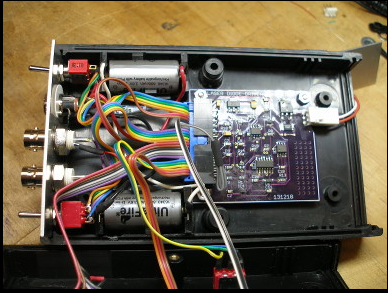Arthur English's group at Emory has developed a custom device that they have used for stimulating peripheral nerves optically in anesthetized mice using a standard optical fiber. The device is compact, rechargeable battery-operated, and controlled either manually or by computer using an analog input. Essentially, laser LED illumination is coupled to an optical fiber by a collimator and can be attached to a standard optical fiber patch cable with an FC/PC Connector (e.g.ThorLabs #M82L01). The device is considered a class 3B laser, so appropriate safety precautions must be taken. As described, the device outputs blue light suitable for activation of channelrhodopsin (473nM), but could be adapted to produce light of different wavelengths.
The zip file linked above includes
- Assembly
- Laser diode driver construction notes – detailed instructions for building the device
- Laser diode box wiring – instructions for internal wiring of the enclosure
- Laser diode driver V2A BOM – bill of materials (parts list)
- Eagle PCB files
- Board – top side – PDF view of top of board
- Schematic – PDF of electrical schematic
- Laser_diode_driver.sch – CadSoft Eagle schematic
- Laser_diode_driver.brd – CadSoft Eagle board layout
- Luminance graph
- Laser LED power output graph – A graph of the typical power output vs. voltage input
- Photos
- Complete set of phots to aid in construction
For More Details: OPTOGENETIC HARDWARE SETUP


